Jazzmaster Bass 3 (5/5)
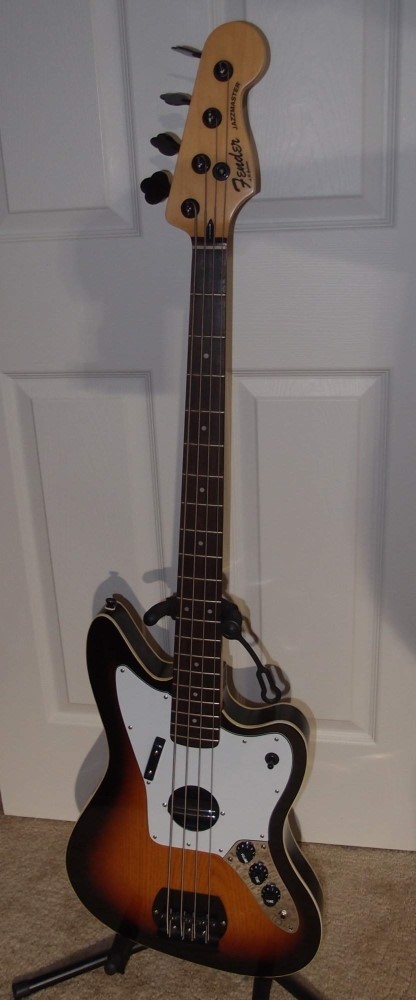
This one has been in the works for a long time. In the last few days, I finished the electronics and did a re-setup, and now it is done.
The neck is a Mighty Mite Jazz. The body is all plywood. The sides are glued up plywood frames, and the faces are thin oak veneer cabinet facing. I would not use that latter again - oak sucks. In the time it has been hanging on the wall, the grain has pulled in, and what was originally a mirror finish is now a woody gloss. The grain in the plywood sides has pulled out a bit too and made some checking. Still, it looks good enough for me, you have to get right up to it to see any of that. Here is a shot showing the depth of the body and the binding:
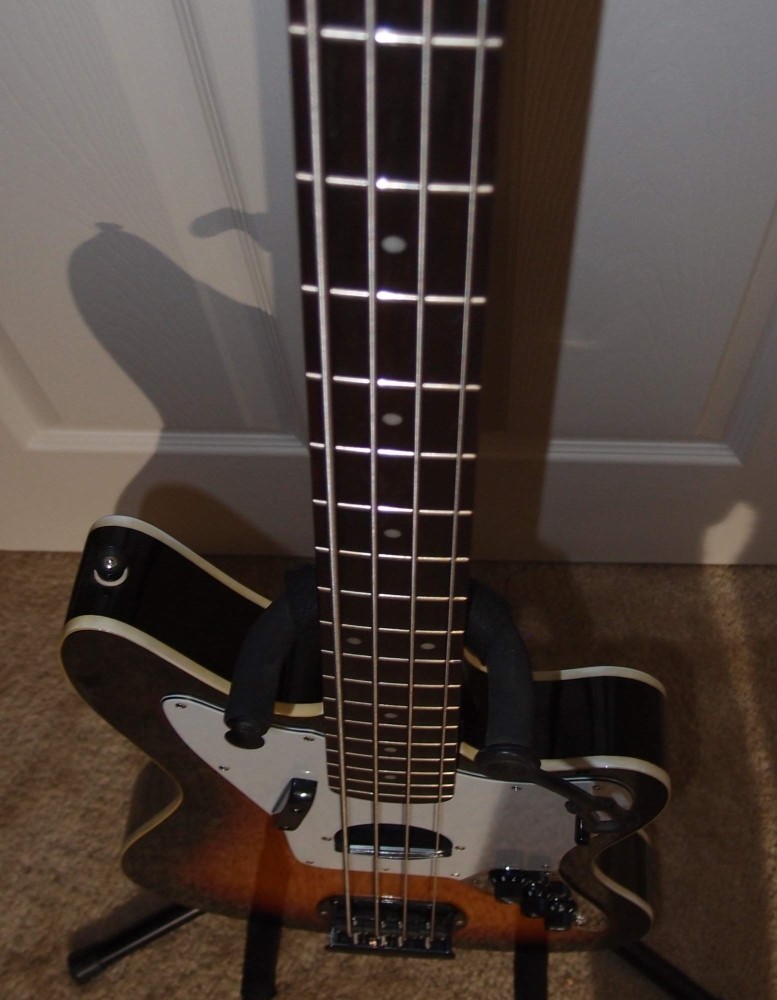
The hardware is obviously all black. The black pickup saddles are actually GraphTech piezos. The sound hole is an actual soundhole, sized to double as a mount for the inexpensive 'hot' rail humbucker, which is actually a guitar pickup that works great in a bass. The main issue with it is that it is Strat-sized, and won't cover the string spread on a full-sized bass near the bridge, although it works fine nearer the neck, or on narrower necks.
I painted the inside of the body black for contrast. This is one of my nicer sunbursts, and one of my first binding jobs. I didn't like the black control plate, and used a chrome one instead. You gotta have some shiny bits. The fasteners are all stainless steel from the marine supplies store. The choice of pickguard was tortoise or white, and I think I picked the right one. The white pickguard with the black soundhole with two chrome rails across it looks really sharp.
The headstock decals are all laser-printed on clear stock. The logo uses the "Fender font", which you can find online. You can see I signed it under the Fender logo. I have no intention of passing it off as a real Fender, I just like the look.
The electronics are something special. Here is a shot before closing it up for the last time:
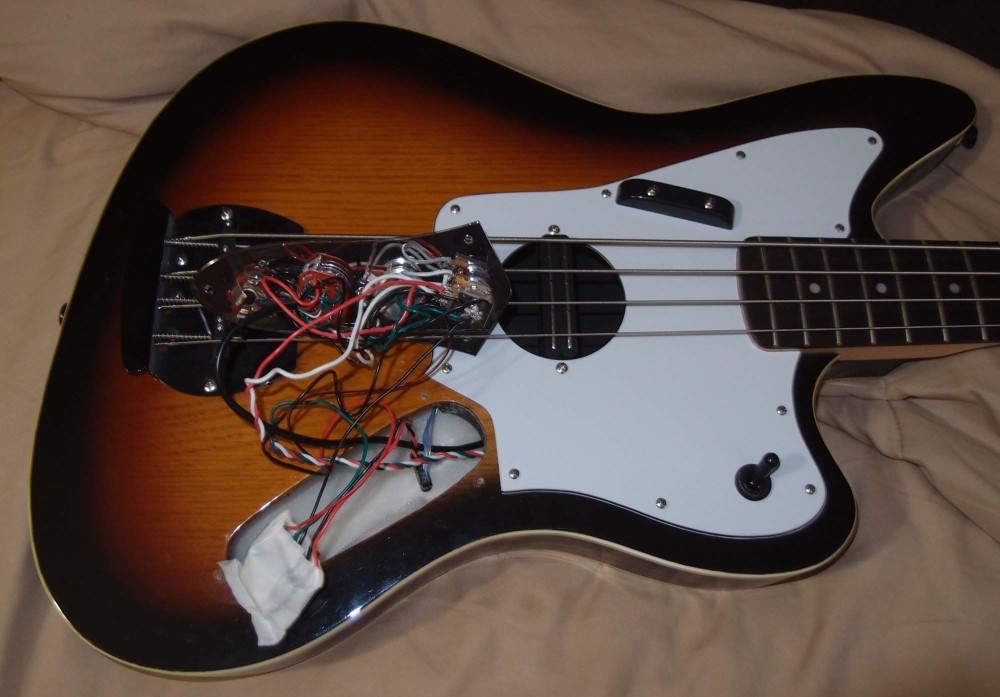
Look at that rat's nest. Good thing this is a hollow-body, to contain all that spaghetti. I put a piece of foam padding in the body to stop rattles. The tape-wrapped item at the lower-left is a DIY piezo buffer that runs on a 9 volt battery, which is installed in the back. The output of the buffer goes to the pickup switch. The switch selects piezo, humbucker, or both in parallel. The signal of the piezo is trimmed to match the output of the humbucker, so you can treat it like any other pickup.
Without the buffer, the piezos sound terrible - no bass, all finger noise. With the buffer, the piezos sound much like the unplugged sound, that is to say, with a lot more higher frequencies than the humbucker picks up. Unplugged, it sounds like a hollowbody, but it is not an acoustic bass, the body is too thin to resonate like that, and the strings are not acoustic.
The humbucker is switchable between three modes by the second tone knob: series, single coil, and parallel. Parallel is thinner, like a Jazz bass, while series has more punch and low end, like a Precision. Single coil is closer to parallel, with noise - not very useful, but it is a three-way switch, so what the heck. So this bass has a really wide range of tones it can produce. The humbucker was my insurance policy if the piezo system didn't work out - I would still have a usable guitar.
The first tone control is a conventional passive treble cut. The volume has a pull switch that powers-down the piezo buffer and overrides the pickup switch, so you get the humbucker regardless of the switch position. You can think of this as failsafe dead-battery mode, or I'm-too-lazy-to-put-a-battery-in mode, or I'm-too-lazy-to unplug-the-cord mode. I will repeat my rant on batteries:
All batteries leak. It is not a question of if, but when. Never leave a battery in any device you are not using. You will forget it, and it will ruin your device. Alkaline batteries are worse than acid batteries ever were, and the quality of modern batteries has gone down to zero - they will leak, guaranteed. Duracells are the worst, you can often find them leaking in the package at the store. Also, inside every 9 volt battery are six little cylindrical cells. This thing is a bomb, I have never seen one not leak. If you must keep batteries in something long-term, like an emergency flashlight, use lithiums. Lithiums are expensive but have no leakage problems.
So on a guitar, never install a battery under the control cover where you need a screwdriver to get at it. Sooner than later, it will rot out the insides of your guitar. Always use a battery box, and take the battery out and set it aside when you are done playing. If you forget it and it does leak, it will hopefully only ruin the battery box.
Anyway, I have only just started to play with this guitar, but I like it already. Looks good, plays good, sounds good.
Here it is again, ages ago, not fully functional, with its two older siblings:
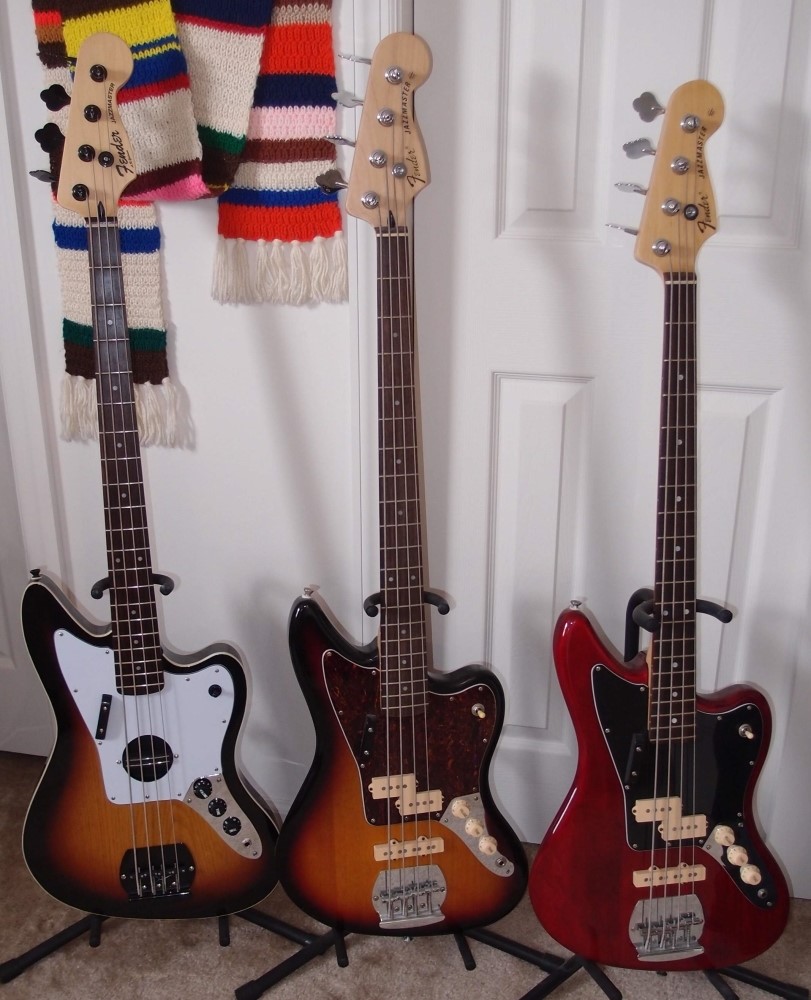





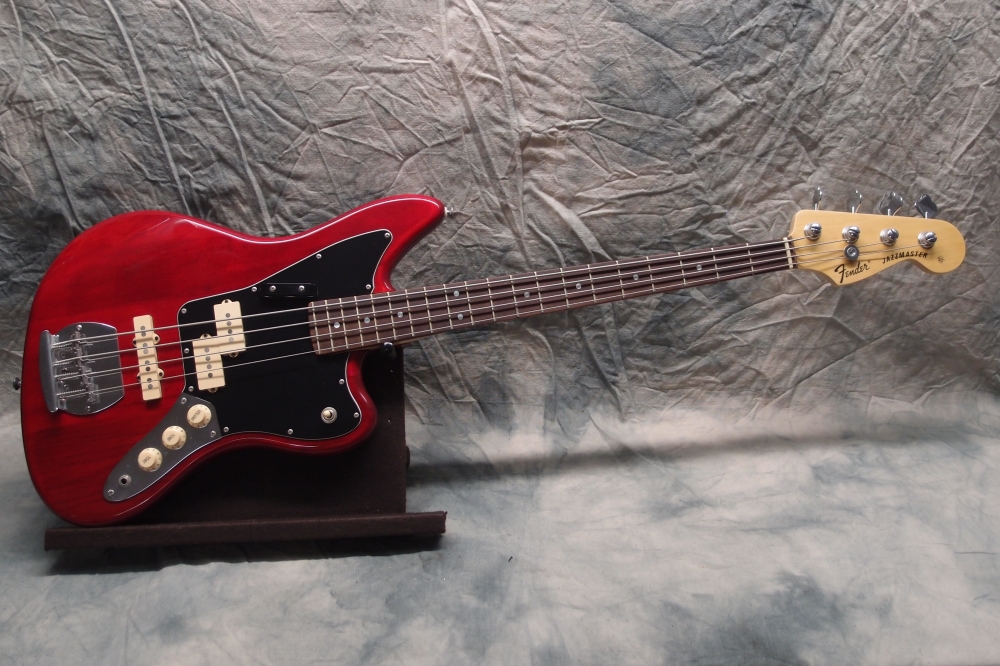
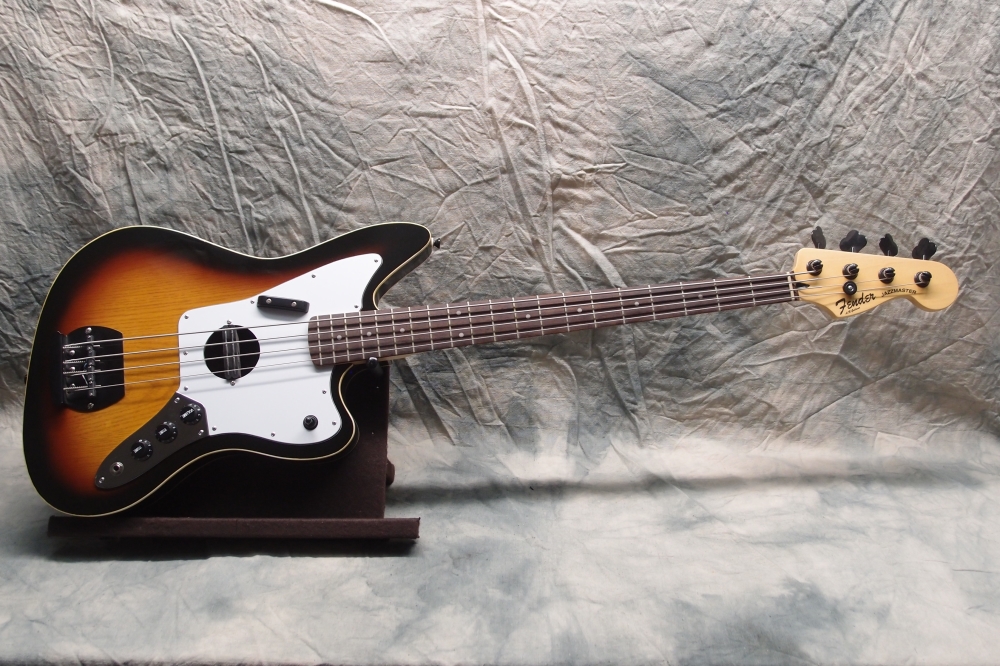


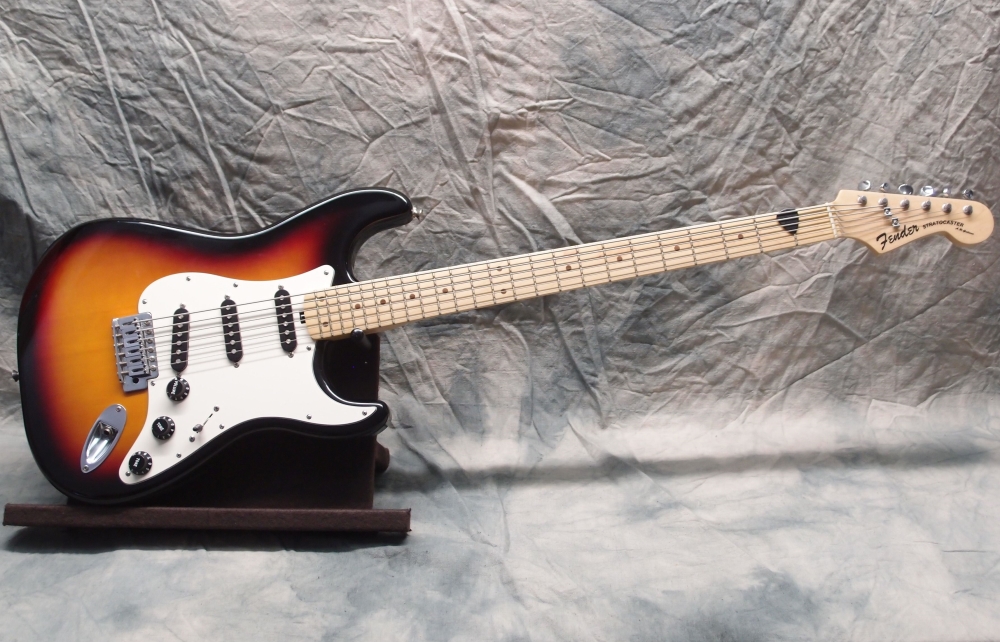
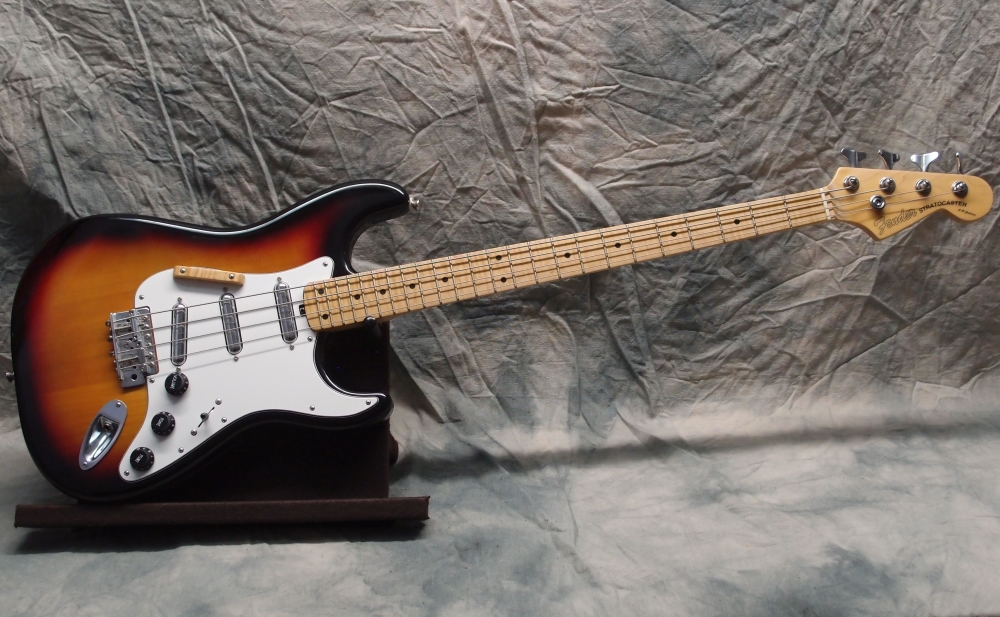
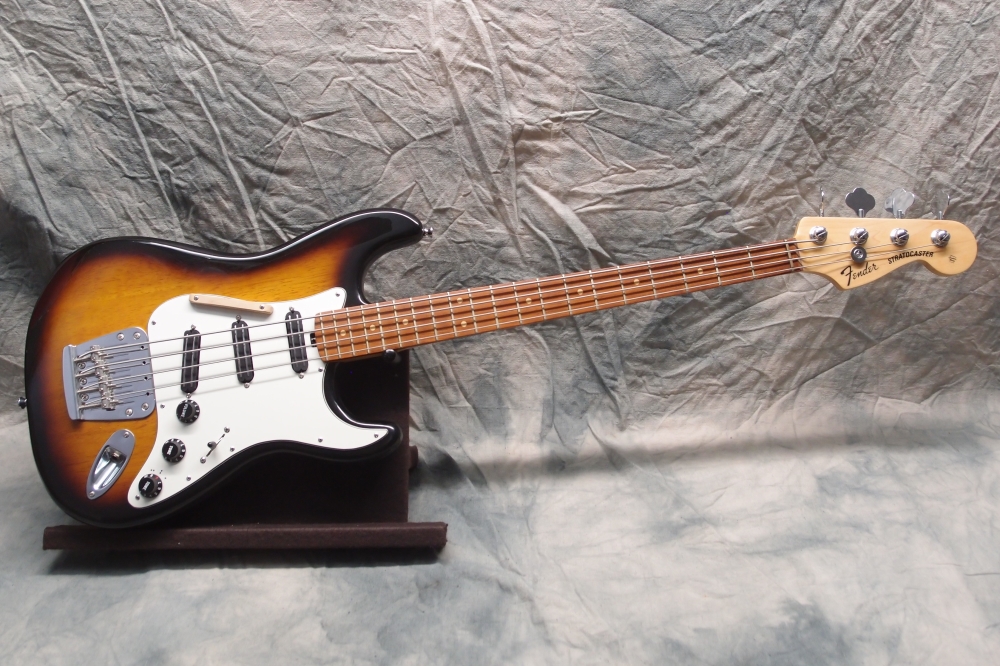
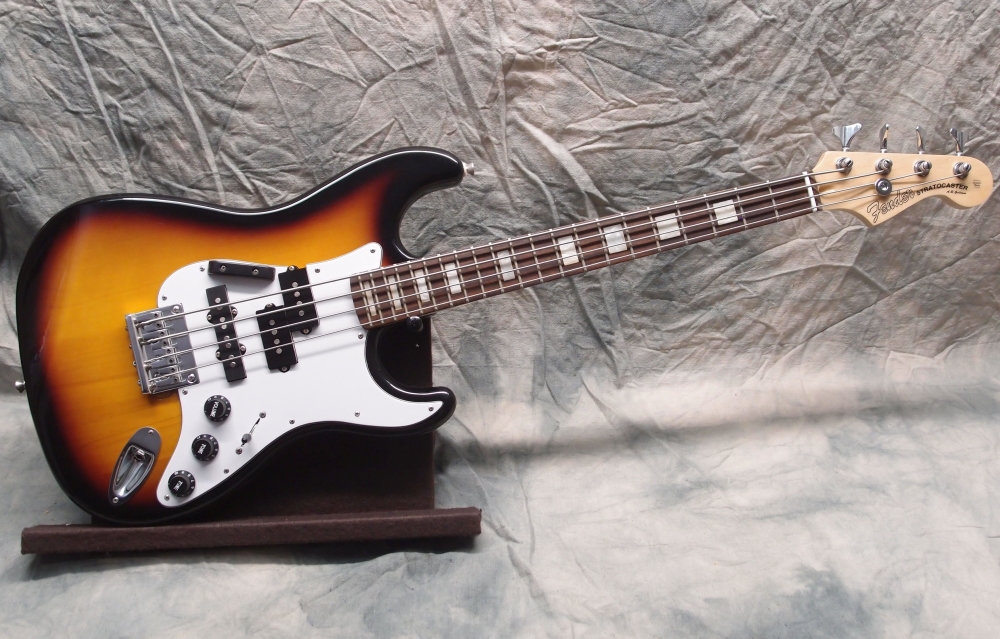
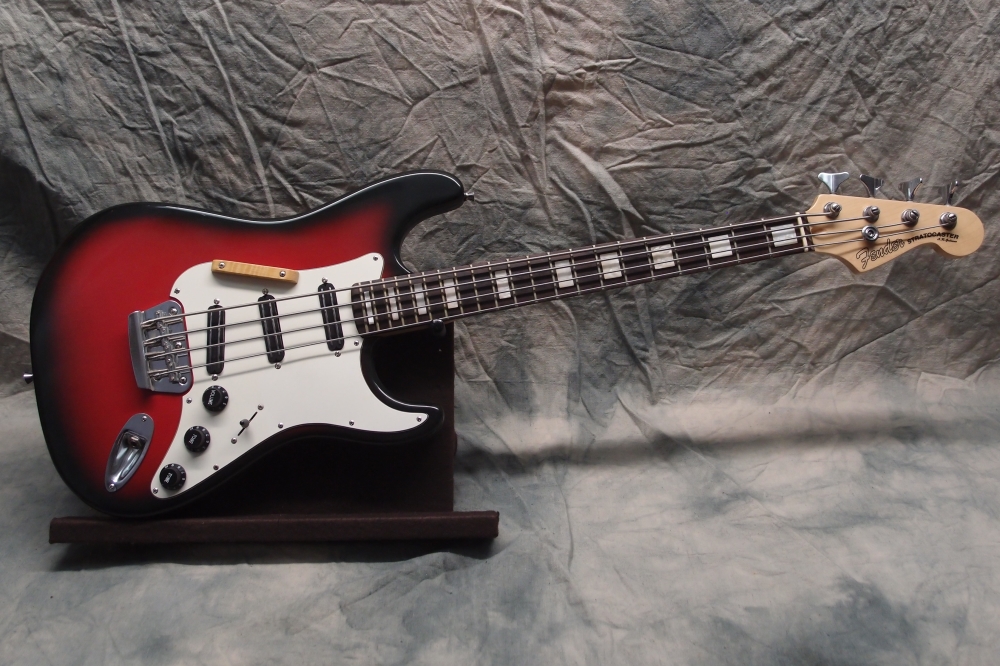
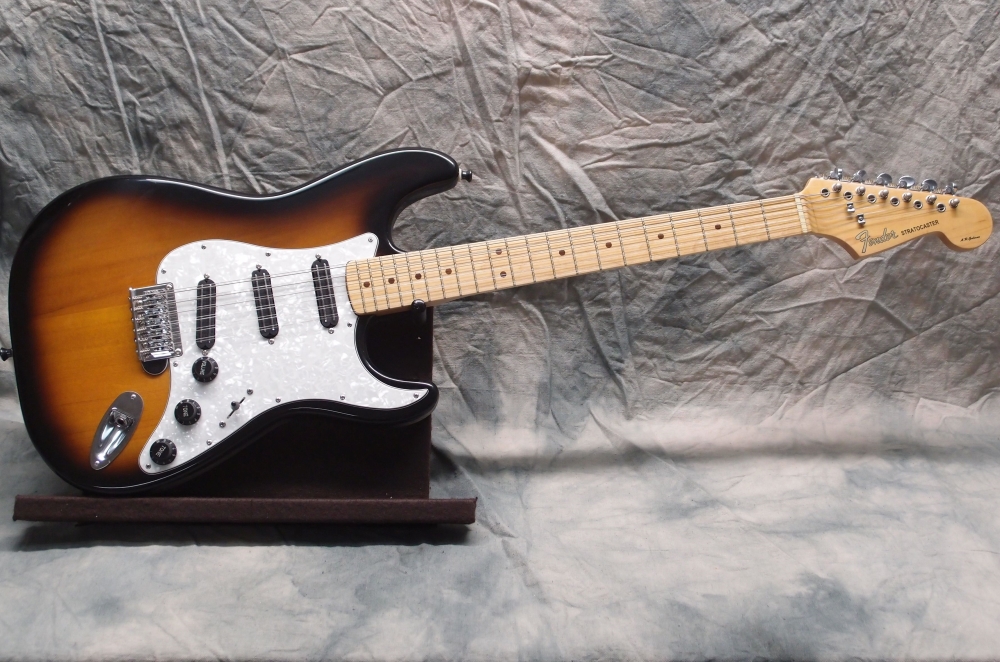
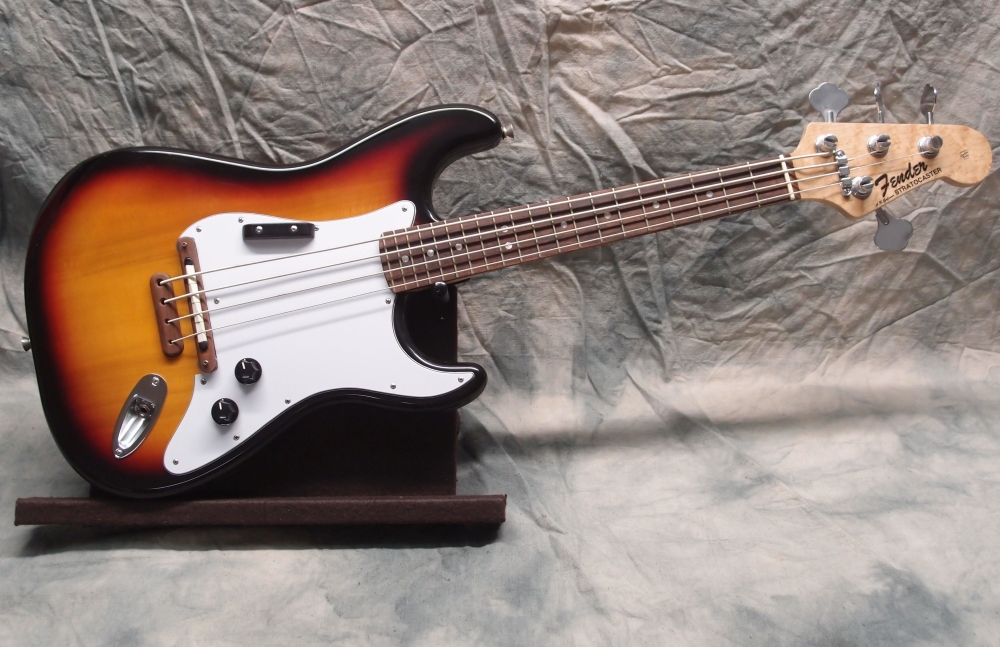
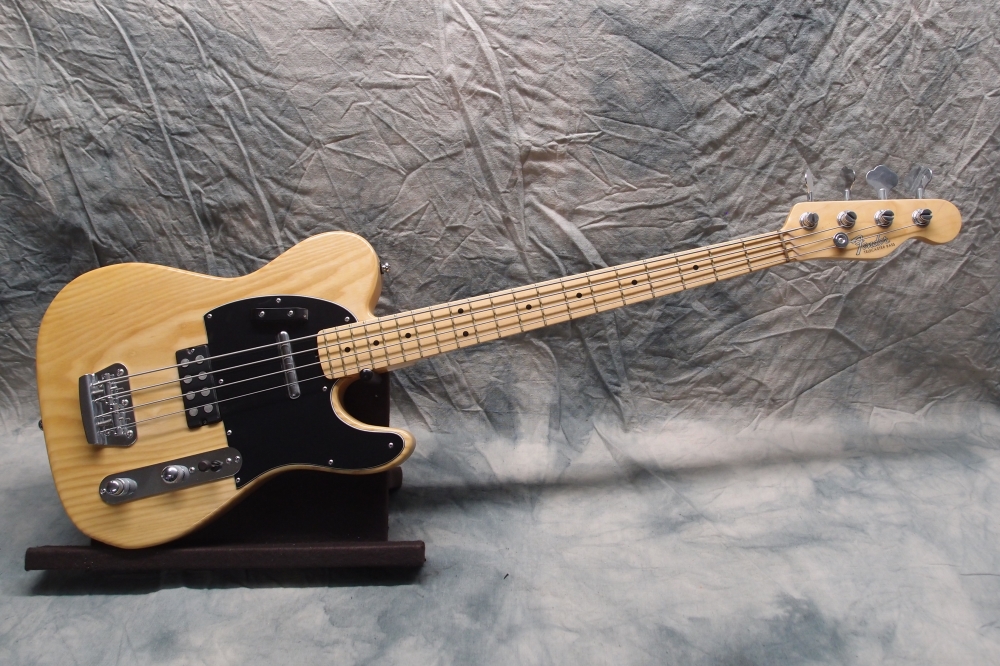
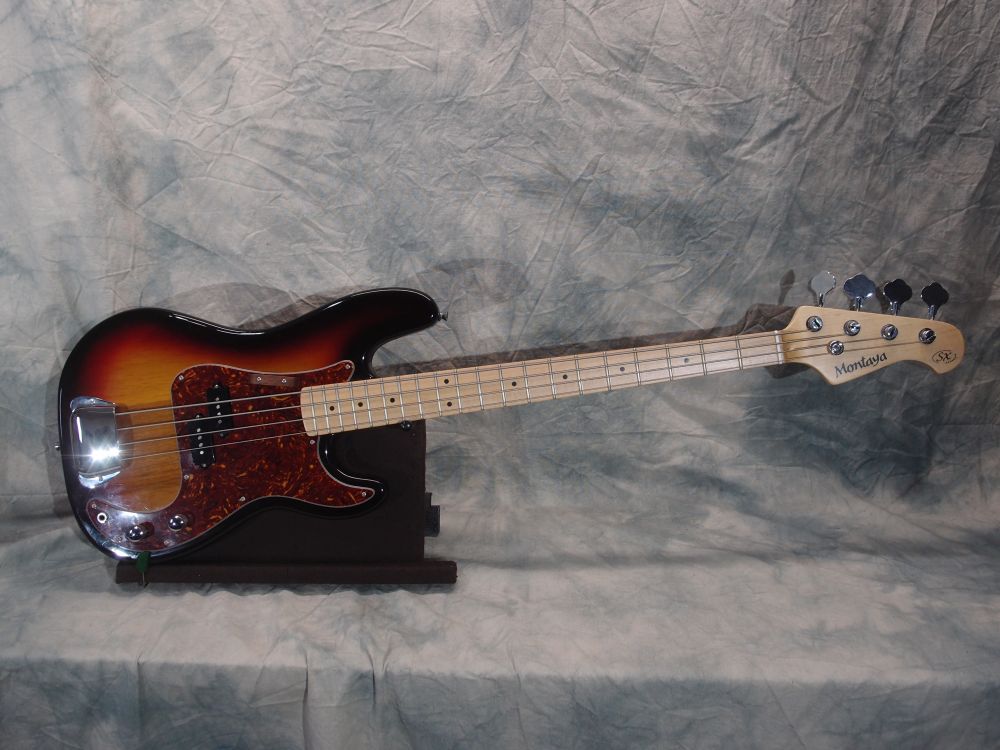
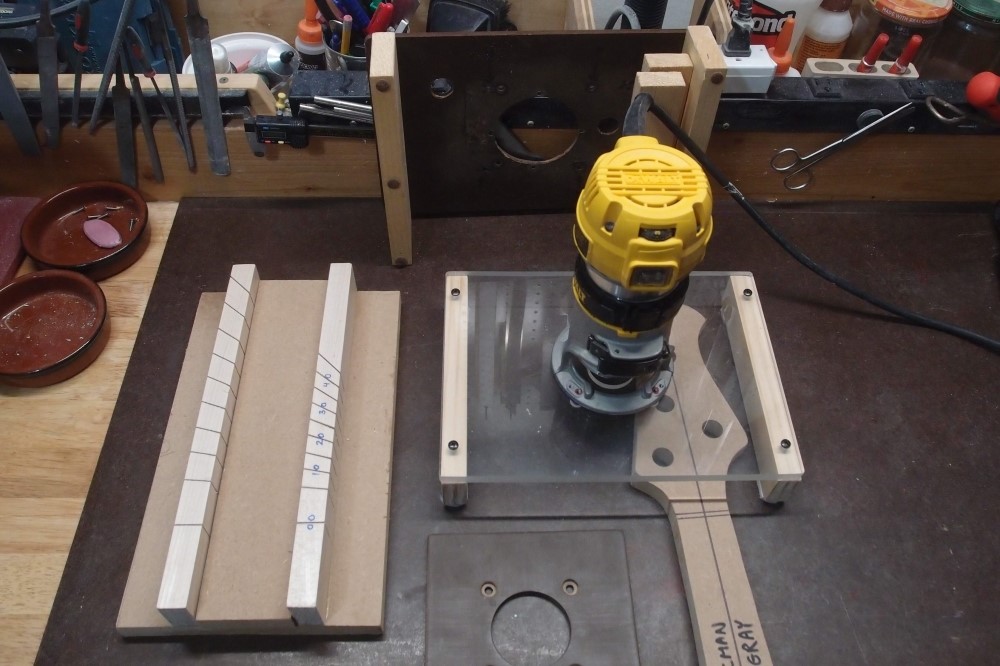
Questions or Inquiries?
Just want to say Hello? Sign the .